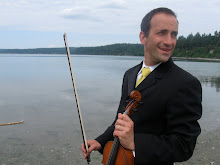This will be our 4th week of class for this session. We will have no class next week for Thanksgiving and the day after with 3 weeks of classes in December. There are also a number of special events at the school in December, many of which you may wish to attend. In the coming weeks I will provide more information about upcoming events so you can decide whether it would be appropriate for your family or not.
This Thursday at 11 is an elementary school assembly at Thomas Berry Hall at the Whidbey Institute. Continue down Old Pietila Road. At 10:45am or so, the elementary classes walk down the road to the Institute and cars will not be able to drive. It is probably best to park at school and walk down or drive down very early. Grades 1 to 8 will each present music, verse, or movement for about 5 minutes. The assembly will last for about 45 minutes. While the material is not designed for young children, parents may be interested to come to an assembly to receive a glimpse of what occurs in the elementary grades. Some infants and toddlers will be quite content to keep you company; others would much prefer to be moving freely inside or outside.
The Holiday Workshop on Saturday, December 6 from 10 to 4, will have activities intended to delight very young children. There will be lots of live music (including a caroling vocal quartet of the two kindergarten teachers, the first grade teacher, and me--and perhaps an instrumental trio in which I'll be playing) and cheer. Some crafts and activities may be more suited for older children, but the organizers do want the day to be inclusive and festive for children of all ages.
As a follow-up to the article "Genuine Encounter" and our exploration of the time given for unique growing by Corkille Briggs, Gerber, Pikler, and Waldorf educators, I wanted to share this "Open Letter to the Mother of a 'Stuttering' Child" that I share with my nursery families as they prepare for parent & teacher conferences. This is an old article. It may not even reflect current research by speech experts. It was given to me by a professor at the University of Maryland when I was training to become a public school nursery or kindergarten teacher; she found it to be one of the most helpful articles she had ever read about the importance of allowing children time to develop before fixing them with a label. As you will read in the article, the author and other researchers found that the most potent cause of stuttering was the diagnosis of stuttering. All children stumble over words and repeat from time to time; it was only once a parent or teacher regarded this normal disfluency as a problem that speech became more difficult.I find many analogies with my work with children birth to 5. Children do not begin as miniature models of perfect adults (if there were such a thing) but develop in their own way and in their own pace. Some children may learn to ride a bike at 3, others much later. Some will be ready to solve conflicts with the words of Nelson Mandela or Gandhi from toddlerhood; most will use less beautiful forms of physical or verbal force as they learn how to be an individual in a group. Some children will pronounce all consonants at an early age. For some children, it is still normal for some consonants, especially blends, to wait until age 6 or beyond.
I am not advocating we ignore all medical professionals or other experts. There will be children for whom an early intervention provides tremendous benefits. For most children, even children with profound special needs, what we offer in Waldorf early childhood education and home life--real, meaningful work done artistically by a present adult in a nourishing enviroment that invites imitation and free movement and inspires the imagination, all within a strong rhythm that provides structure and predictabilty, while providing a life free from the over/understimulation of media, overscheduling, judgment, and rushing--already provides developmental help for all children. I was at a Sophia's Hearth workshop in Keene, NH, where this point was brought strongly to parent & child teachers. Rather than causing problems by expressing concerns to parents about what may be normal (though frustrating) toddler or infant development, we as teachers should strive to create such health-giving programs that all children benefit. We would be ready to answer questions or give unprofessional hunches if a parent sought one out.
The suggestions at the end of this article seem so close to what Corkille Briggs recommends in "Genuine Encounter," and I thought this would be a good research piece to go along with last week's selection.
With warmth and light,
William Geoffrey Dolde

